After some shady bus dealings by the bus company for our journey between Bolivia and Peru we arrived in our first Peruvian destination of Arequipa where our first attraction
was the Museo Santuarios Andinos, to visit another of the ‘ice’ children. Inca civilisation was the largest empire in Pre-Columbian America starting around 1200 and coming to prominence around 1440 before dying out
in the early 1600s. The Incas worshiped the mountains as gods and sacrificed children whenever there was a earthquake, volcanic eruption or natural disaster, believing that the sacrifice would appease the gods
and thus lead to the Incas protection.
Due to a warming of the climate and other external factors sacrificed children preserved in ice throughout the years are starting to be found on the highest peaks in the Andes.
We´re becoming quite addicted to these Ice Children and in Arequipa we went to see Juanita known locally as the Ice Maiden, who was found atop Mount Ampato in the Peruvian Andes. She wasn´t as well preserved as ‘El Nino’ whom we saw in Salta as she
had fallen out of her ceremonial grave when a volcanic eruption from a neighbouring peak melted the ice on Mount Ampato, but it was interesting to hear her story none the less. It was considered an honour to be sacrificed
to save others and the children believed they would pass into the after life and be an icon, and as tourists like us go to visit her, in many ways she is.

In the evening we went about keeping the David´s happy by having my first Peruvian beer and Jo trying the local tipple the Pisco Sour, both with a backdrop of Cerro El Misti
that dominates the skyline in Arequipa and was probably the cause of a few of the Inca sacrifices in the region.
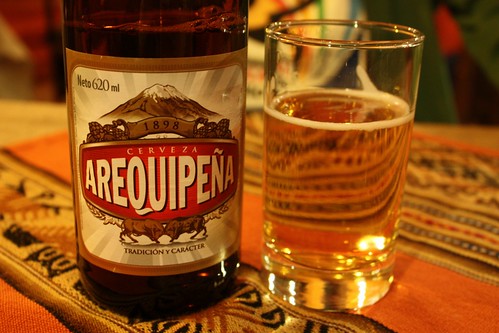
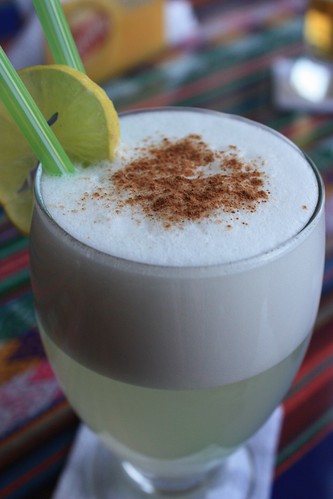
We also explored Monesterio de Santa Catalina a huge citadel of a Spanish monastery that would have had us completely lost if it were still two stories. Like in much of Arequipa
the buildings are no longer more than 2 stories due to the earthquakes and volcanic eruptions that have levelled the city over the years. The damage and rebuilding has made for an interesting mix and contrast of styles from
different time periods.
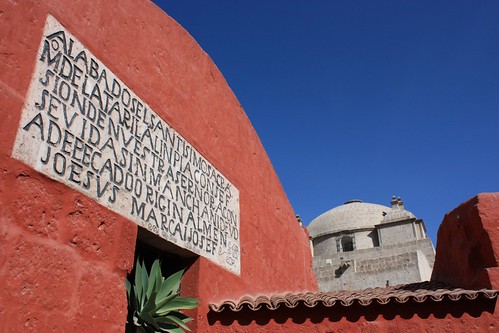
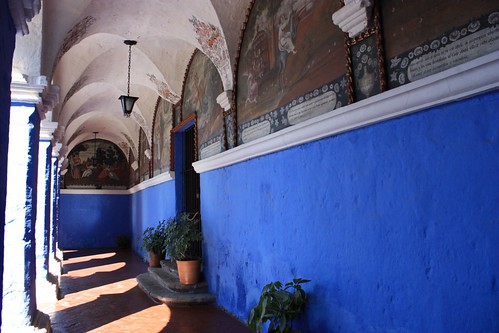
Nazca
We decided to head to Nazca next and rather than heading straight to the towns main attraction we decided to first visit the Cemetery of Chauchilla. The Nazca civilization is
believed to have thrived between 500 BC and 600 AD, some 600 years before the Incas. The cemetery has been looted by treasure hunters and although many of the bones are still spread out around the site many of the ancient
mummies remain in their original graves along with ancient artifacts.
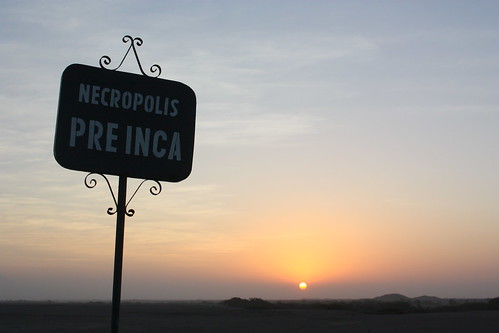
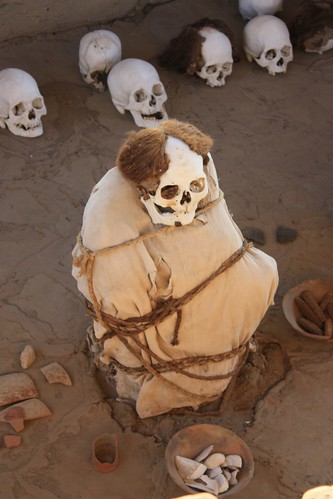
But the real reason for coming to Nazca was to visit the 300+ figures and 10,000+ Nazca lines covering an area of 525 kilometres in the desert just outside of modern day Nazca.
The desert is thought to have been a place of religious ceremony where the Nazca people smashed pots (rather than the heads of children) as an offering to their gods who they believed were in the sky. Many of the ceramics and
textiles found in the Necropolis in Chauchilla bear the designs etched into the sand in the desert.
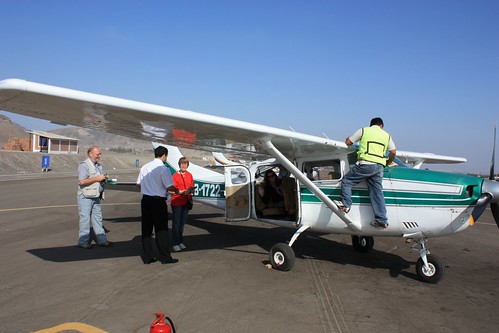
To see the lines properly you have to take to the sky, so we booked ourselves on a flight in a four seater plane. The first 10 minutes or so were stomach churning while my
body adapted to such a small aircraft. As we flew over the desert, we started to wonder if we would get to see anything, but as the lines started to appear we forgot about our stomachs and enjoyed the view. Although many were smaller than expected
from the air, you could gauge their size especially those with the Pan Americana highway running next to them.
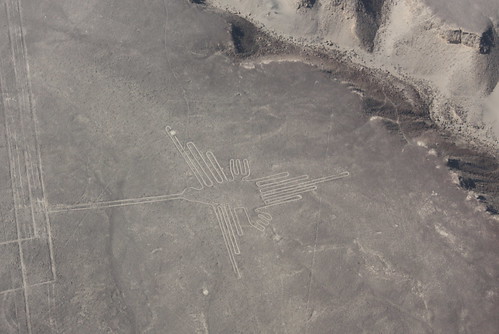
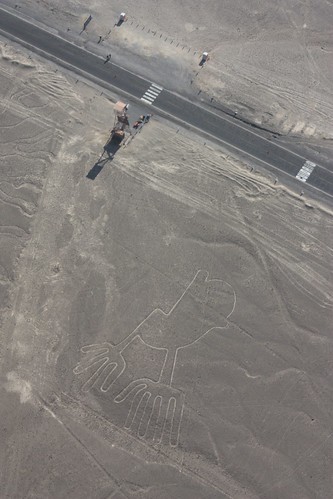
With the Monkey being a favourite of ours.
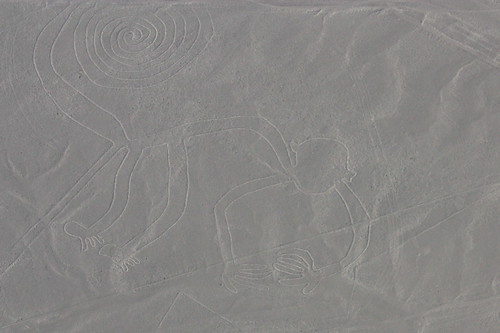
Cuzco
From Nazca we took an overnight bus to Cuzco, which was the centre of the Inca Empire and today is perhaps the centre of the South American tourist industry, with touts lining
every street and endless offers for massages and tours. The area around Cuzco is known as the Sacred Valley and there are hundreds of sites to visit and explore. However, we went to a few and were somewhat underwhelmed so
we decided to head straight to the areas most famous site and one of the new seven wonders of the world.
Rather than paying a lot of money to get the main train to the town of Aqua Calientes, we decided to take the 12 hour back route involving a bus, two taxis along precarious
roads and a 3 hour hike along train tracks.

The next morning we got up at 3am and started a 90 minute uphill trek to get to the entrance gate. We managed to be one of the first twenty people into the site and
the first to reach the Caretakers Hut of the Funery rock for this photo
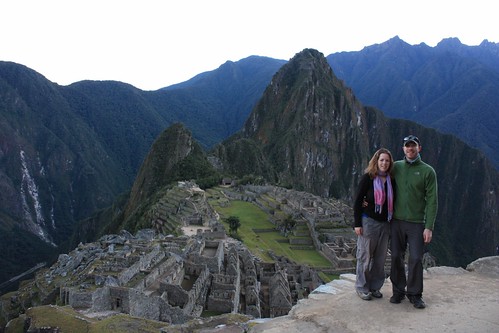
In the Quechua language Machu Picchu means old mountain and the site takes its name from the mountain that lies out of shot behind the complex. To think that we were worried that it would be an anti climax due to the fact that we considered it a huge milestone of the trip and due to its over saturation in Peru, where
it is literally on every poster in every shop, we were actually rendered speechless by its beauty.

The site was never discovered and therefore never destroyed by the Spanish and although abandoned and overgrown when it was revealed to the outside world in 1911, it was still in good condition mainly due to the strong construction without the use of any cement.

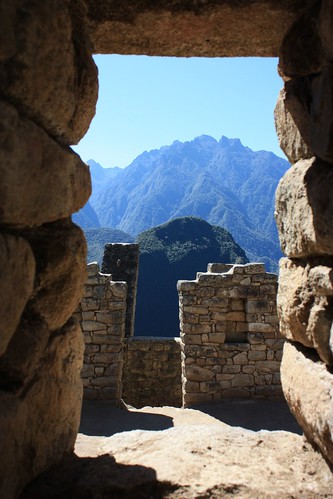
One of the reasons for getting up so early was to receive one of the 400 tickets given daily to climb Wayna Picchu, the famous mountain which sits behind the main complex.
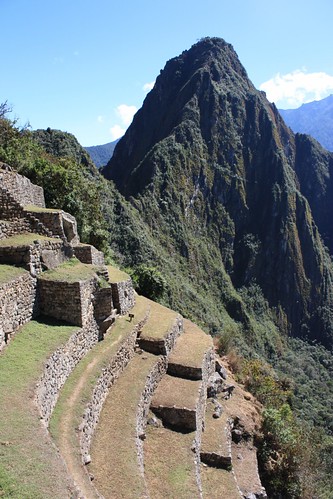
The steep climb was well worth it for a different perspective of the site and to see the surrounding valleys and mountains that we had spent 3 hours walking around the day
before speculating where Machu Picchu may lie only to see that we had walked almost 360 degrees around the site without realizing it’s existence until very near the end of our trek.


We also went to the Inca Bridge which was used to stop trespassers reaching the complex from one of the eight known trails to Machu Picchu. The most famous of which is the
most popular trek in South America, the Inca Trail. As we decided not to do the trek ourselves as we didn’t want to commit ourselves to a specific date as you need book about 3 months in advance, we decided to walk up to the
Sun Gate for which the Inca Trail is the only trail to go through.
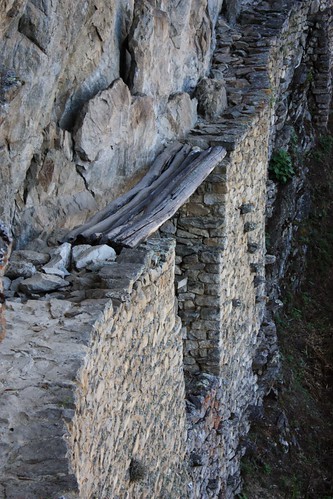
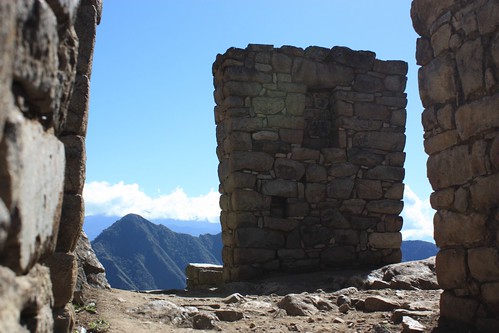
As the day went on the site got more and more full with visitors, our favourite time was early in the morning when it was less crowded and you felt you were only sharing the
site with these fellows.

It was everything we hoped it would be and so much more, we loved it so much that we spent over 8 hours at the site exploring every nook and cranny, it’s safe to say that
it wasn’t an anti-climax.
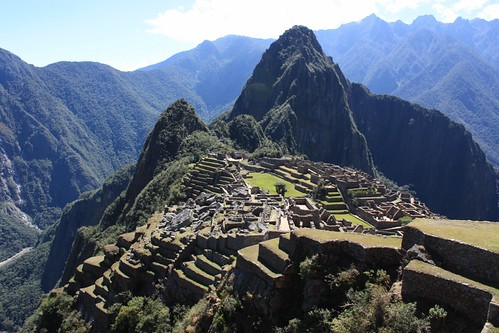
Until next time
Ryan & Jo
Flickr: http://www.flickr.com/photos/dojo77/